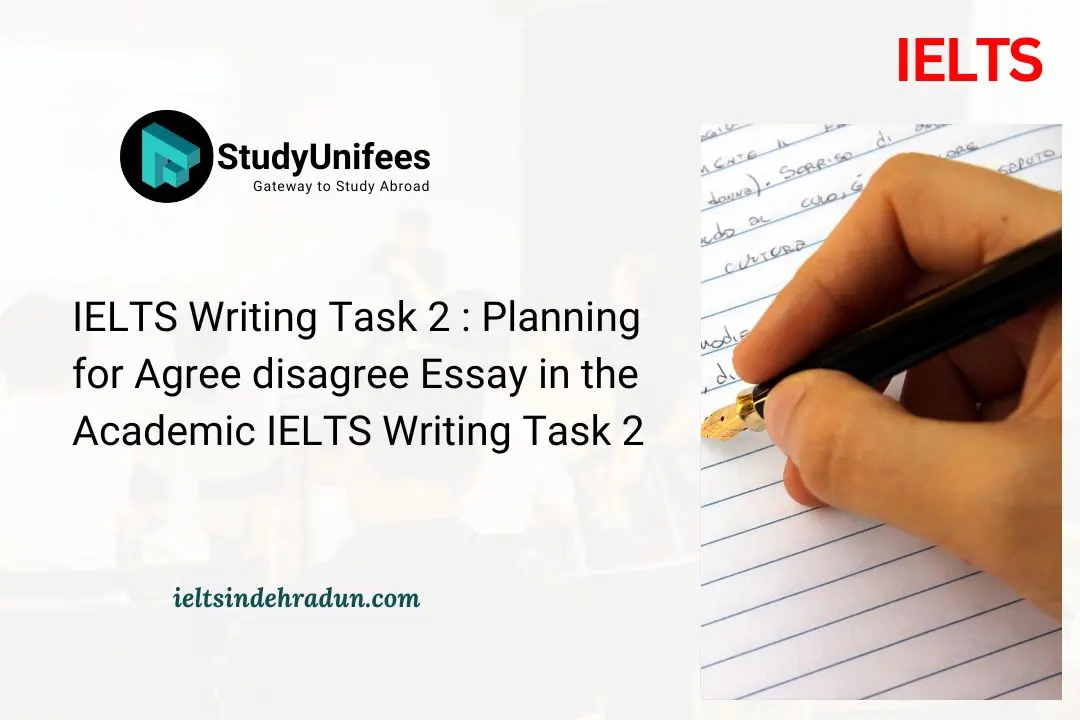
When it comes to excelling in the Academic IELTS Writing Task 2, particularly with the agree/disagree essay, meticulous planning becomes the backbone of success. In the IELTS writing segment, the effectiveness of planning is a game-changer in Task 2. It is more than just a preparatory step; it’s a strategic approach that ensures clarity, coherence, and a compelling argument in your essay.
Why is planning indispensable in IELTS Writing? The reasons are manifold. Firstly, it provides a definitive structure to your thoughts in Task 2. The IELTS Writing Task 2 is a time-constrained exercise where wandering off-topic or getting lost in a sea of ideas is common. A robust plan acts as a navigational tool, keeping your writing focused and on point. Secondly, contrary to the popular belief that planning is time-consuming, it actually saves time. Dedicating a few initial minutes to outline your thoughts can significantly reduce mid-writing pauses, as you already have a clear direction for your essay. Lastly, planning elevates the quality of your essay. The IELTS Writing assessment places a high value on the logical progression of ideas. A well-structured plan ensures that your essay flows seamlessly from one point to the next, making your argument more persuasive and impactful.
Deciphering the Topic: The First Step in IELTS Writing
Understanding the prompt in IELTS Writing Task 2 is critical. A misinterpretation of the topic can lead to an off-target essay, which can be detrimental regardless of the quality of writing. Start by reading the topic multiple times. Identify the general subject area – is it discussing societal issues, technological advancements, environmental concerns, or educational philosophies? This initial identification sets the stage for a more detailed analysis.
The next step is to narrow down to the specific aspect of the topic. IELTS Writing prompts are often layered with nuances. If the topic is about education, for instance, is it focusing on the effectiveness of traditional teaching methods, the impact of technology in learning, or the importance of lifelong learning? Pinpointing this specific angle is crucial for a targeted and relevant response.
Brainstorming and Positioning: The Heart of Planning in IELTS Writing
After grasping the topic, engage in a brainstorming session. This step is where you unleash your creativity and analytical skills. Write down every idea, perspective, and argument that comes to mind. Don’t worry about the relevance or feasibility of these ideas at this stage. Brainstorming is about quantity, not quality – it’s about uncovering every possible angle related to the topic.
Once you have a list of ideas, the next phase is sifting and sorting. Evaluate each idea and start forming your stance on the topic. In an agree/disagree essay, it’s imperative to adopt a clear and definitive position. Your choice – whether to agree, disagree, or partially agree – should be based on the ideas you can best substantiate with logic and evidence. Remember, the strength of your argument is not determined by the stance you choose, but by how convincingly you argue it.
Breaking Down the Planning Process
A systematic approach to planning your IELTS Writing essay can significantly improve its quality. Consider this step-by-step method:
- Introduction: Start with a brief introduction of the topic. Here, state your position clearly. The introduction sets the tone and direction for the entire essay.
- Body Paragraphs: Plan for at least two body paragraphs. Each should focus on a separate main idea that supports your stance. For each paragraph, outline the main idea, then list supporting points and examples or evidence. This structure ensures that each paragraph is cohesive and contributes to the overall argument.
- Conclusion: Your conclusion should reiterate your position and summarize the key points of your argument. This is your final opportunity to reinforce your stance.
- Vocabulary and Sentence Structures: Consider the vocabulary and sentence structures that will best express your ideas. Planning this in advance helps in enhancing the linguistic quality of your essay, an essential component in the IELTS Writing assessment.
Executing the Essay: Bringing the Plan to Life
With a solid plan in hand, the next stage is execution. Adhere closely to your outline, but remain flexible if you think of better ideas while writing. Ensure each paragraph transitions smoothly to the next, maintaining coherence throughout your essay. Manage your time wisely, allowing a few minutes at the end for revision and edits.
Understanding the IELTS: History, Usefulness, and Format
The International English Language Testing System (IELTS) has established itself as a globally recognized benchmark for English language proficiency. Originating to meet the needs of assessing English skills in academic and immigration settings, IELTS has grown into a comprehensive test used worldwide.
The IELTS assesses four key language skills: listening, reading, writing, and speaking. In the writing section, particularly Task 2, test-takers are required to write an essay responding to a point of view, argument, or problem. Here, the ability to articulate ideas in a clear, logical, and well-structured manner is essential.
Conclusion
Mastering the agree/disagree essay in the Academic IELTS Writing Task 2 is a blend of skill and strategic planning. The importance of planning cannot be overstated. A well-planned essay not only scores higher but also showcases your language proficiency and analytical skills. As you prepare for this task, remember that the strength of your essay lies not just in your arguments, but in how effectively you structure and support them. Practice diligently, and approach each essay with a clear plan in mind. Best of luck in your IELTS journey!
